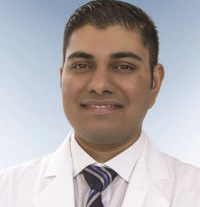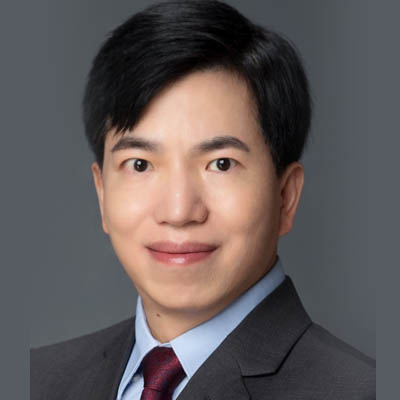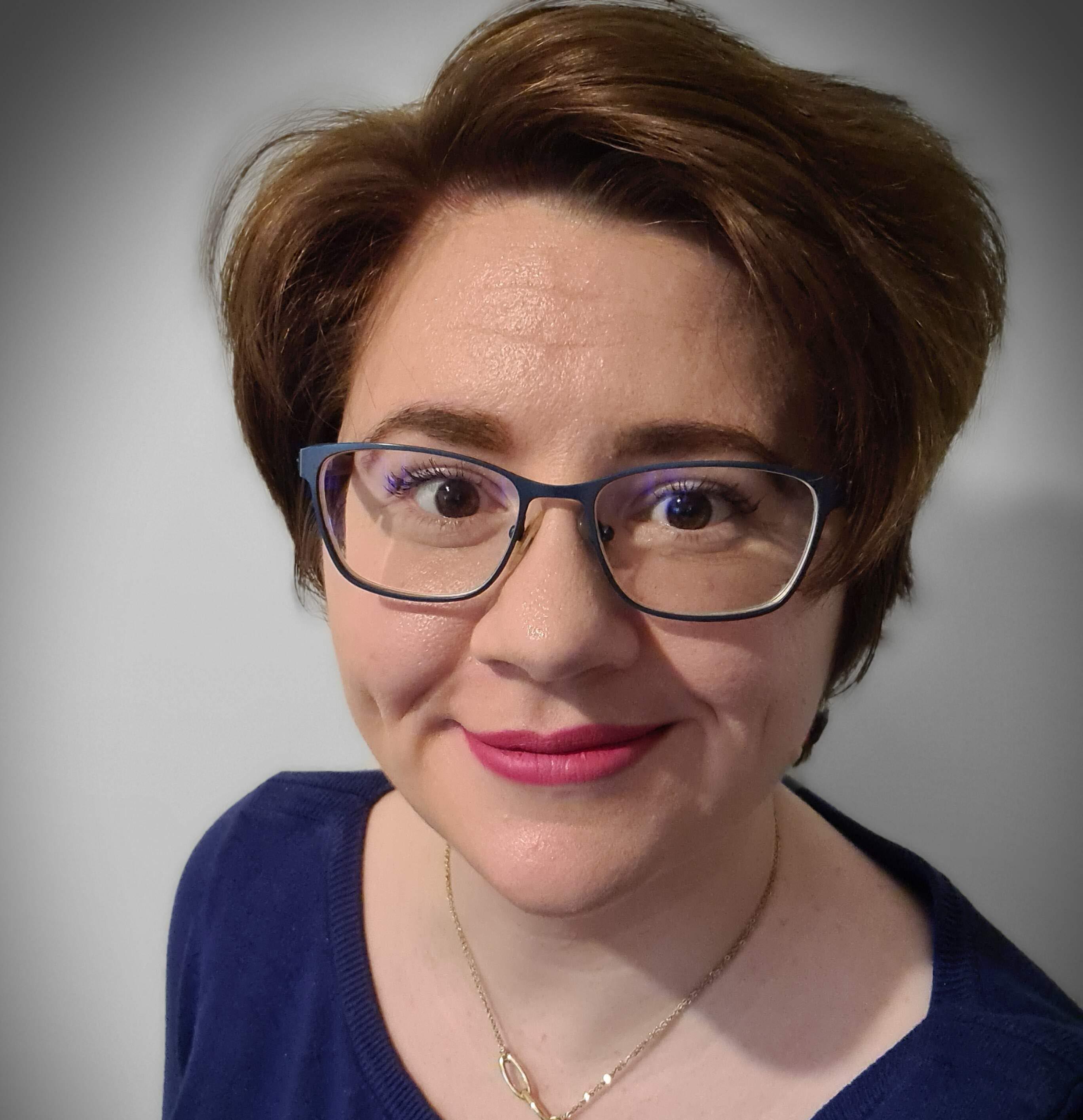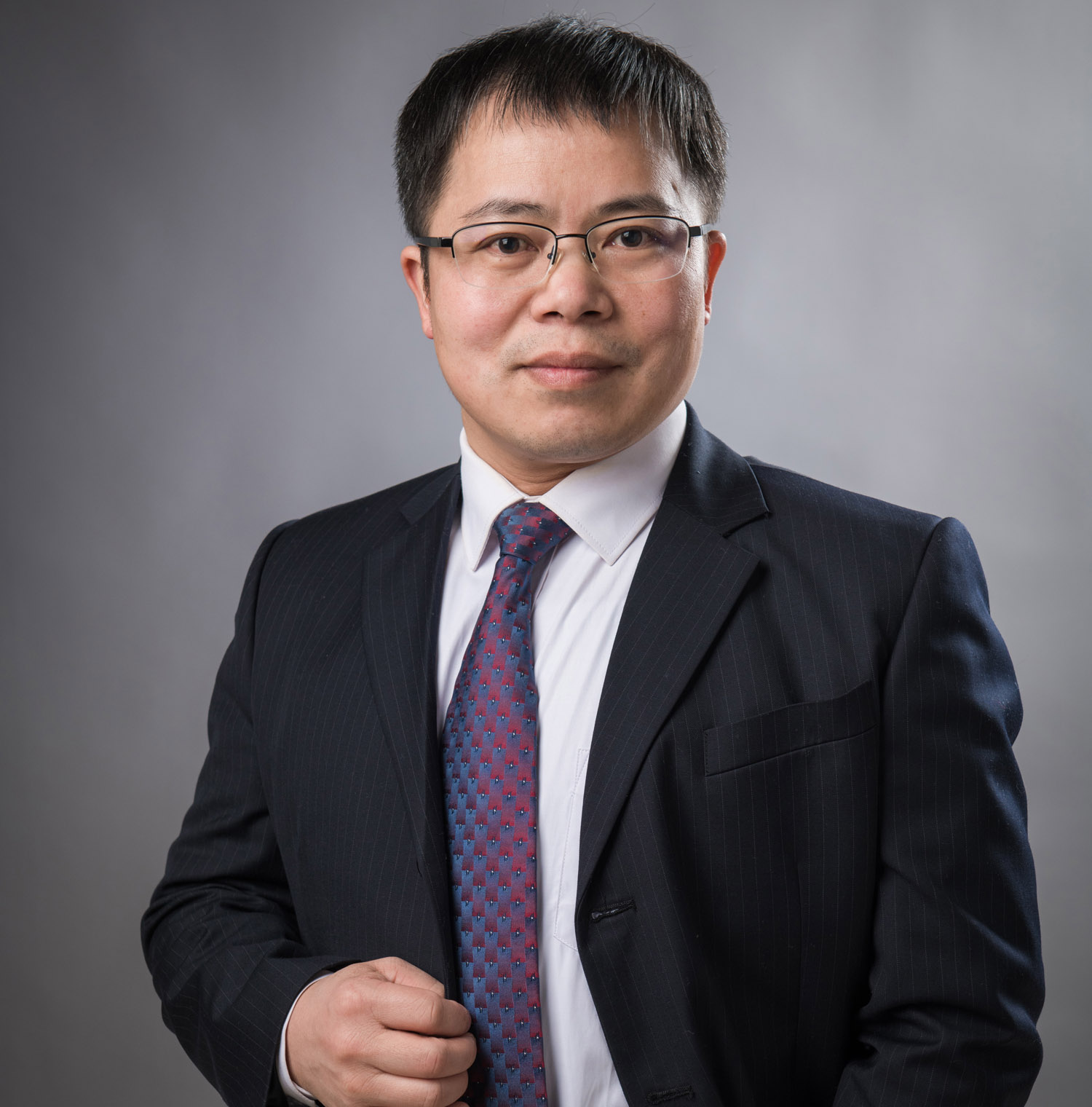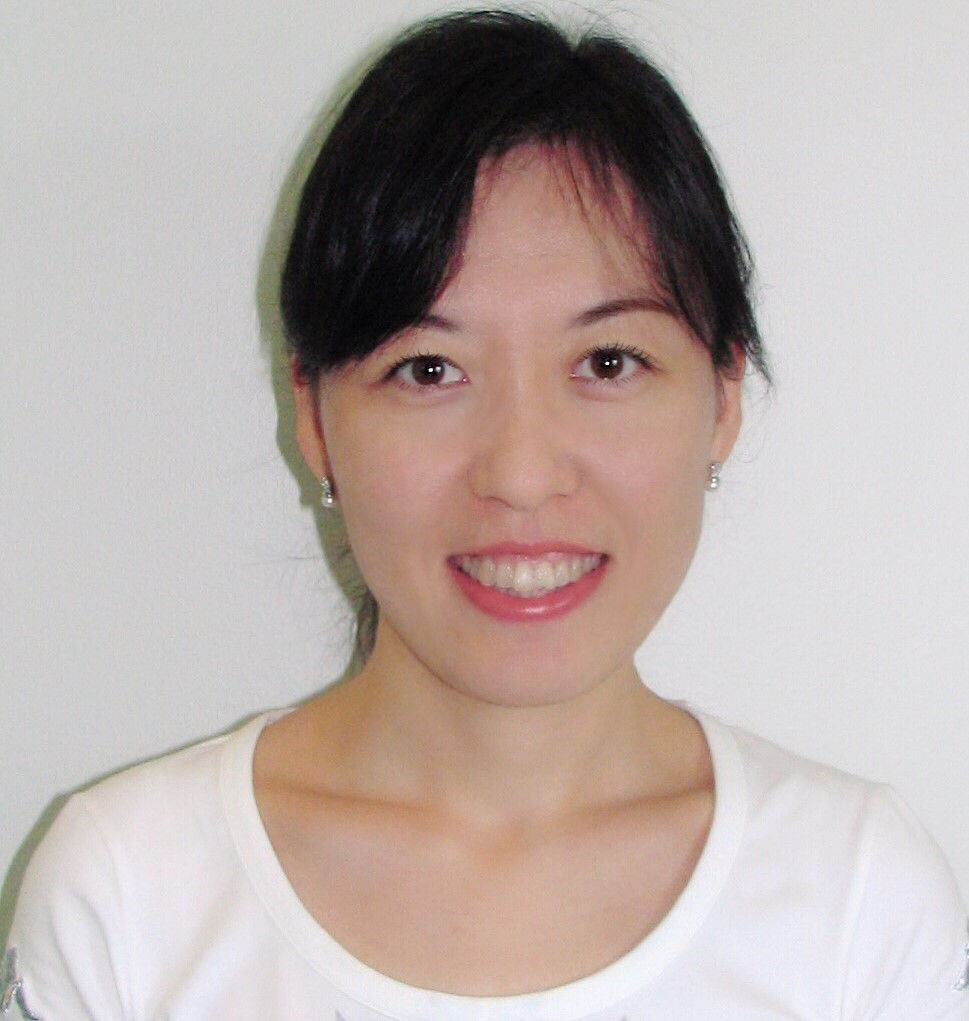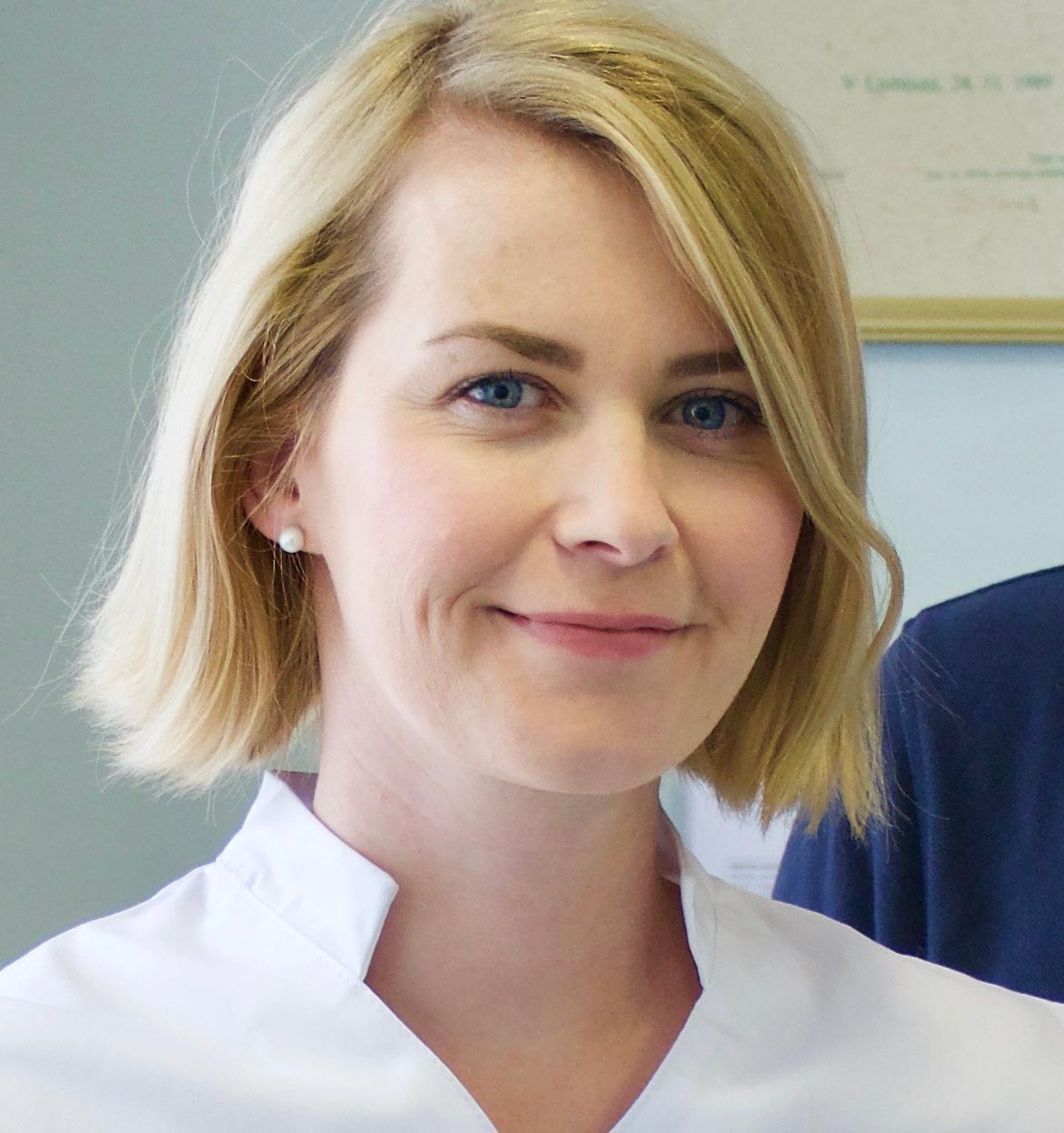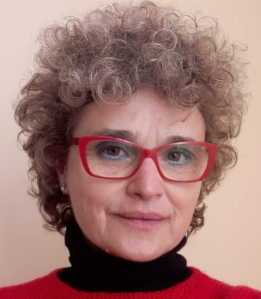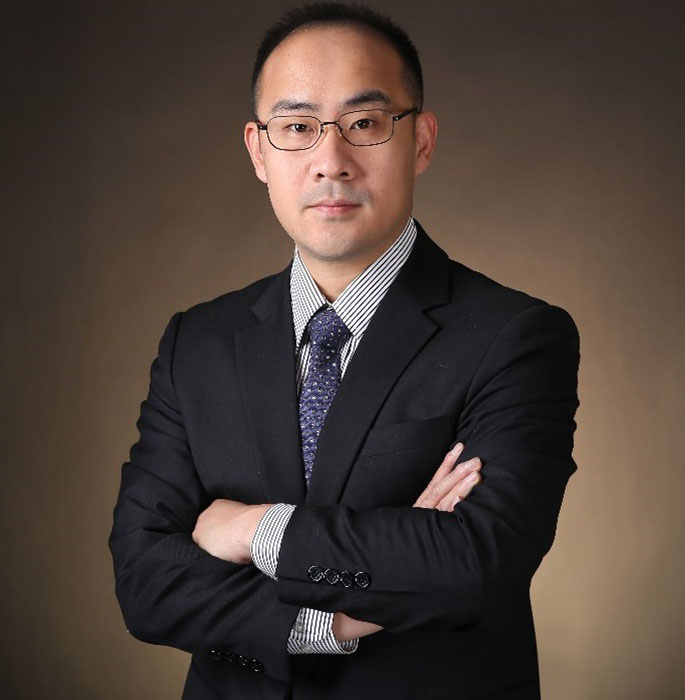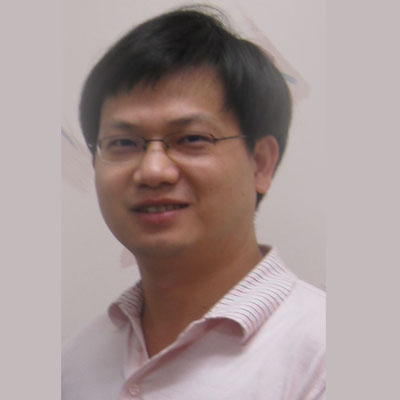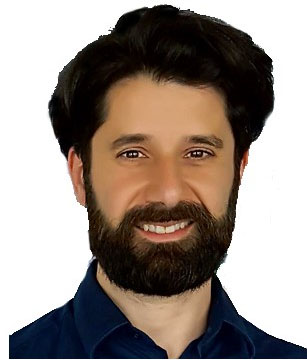Invited Speakers
Dr. Waqar Haque
Department of Radiation Oncology, Houston Methodist Hospital, U.S.A.Speech Title: Utilization of neoadjuvant intensity-modulated radiation therapy and proton beam therapy for esophageal cancer in the United States
Abstract: Background: Randomized esophageal cancer (EC) trials have utilized two- or three-dimensional conformal radiotherapy (3DCRT). Advanced radiotherapy (RT) techniques [(ARTs): intensity-modulated radiotherapy (IMRT) and proton beam therapy (PBT)] may have benefits, but are relatively unproven. This is the first study to date evaluating utilization of ARTs versus 3DCRT in the trimodality setting in the United States.
Methods: The National Cancer Data Base (NCDB) was queried (2004–2013) for newly-diagnosed cT1bT4bN0/N+M0 EC receiving neoadjuvant CRT followed by esophagectomy. The primary objective was to assess temporal trends, with multivariable logistic regression analysis assessing factors predictive of receiving ARTs. Secondarily, Kaplan-Meier analysis evaluated overall survival (OS), Cox proportional hazards modeling determined variables associated with OS, and postoperative complications were compared between cohorts.
Results: Altogether, 3,138 patients met criteria; 1,398 (45%) received 3DCRT, and 1,740 (55%) received ARTs (99% IMRT, 1% PBT). Temporally, utilization of ARTs is steadily rising in the United States, from 20% in 2004 to 69% in 2013, corresponding with a progressive decrease in utilization of 3DCRT. ARTs were more often delivered with advancing age, squamous cell histology, N2+ disease, and at academic centers (P0.05 for all). Treatment at an academic center independently correlated with improved OS (P<0.001).
Conclusions: Utilization of ARTs (IMRT in the vast majority) is steadily rising in the United States; 3DCRT is now used in a minority of patients. This has implications for payers and insurance coverage. ART use is impacted by not only age and disease factors, but also regional and facility differences. Treatment at an academic facility independently correlated with higher survival, which has implications for patient counseling.
Keywords: Esophageal cancer (EC); radiation therapy; chemotherapy; esophagectomy; intensity-modulated radiation therapy; proton beam therapy (PBT)
Dr. William Cho
Cancer Researcher, Hong Kong, ChinaSpeech Title: High-throughput technology for cancer research
Abstract: Cancer is a group of diseases that involve abnormal cell growth. They may invade or spread to other parts of the body. Although there are many challenges in translating biomarker research into a clinical setting, many gene- and protein-based biomarkers are already in use at some stage of patient care. Nevertheless, we still need to speed up the discovery process. High-throughput technology provides the tools needed to observe differences in nucleic acids, proteins, metabolites, and other cellular molecules between individuals of a species. In the era of omics, high-throughput analysis can generate a large amount of data on the functional and/or structural changes within the specimen. This has significantly promoted the discovery of cancer biomarkers and improved our understanding of the molecular response of cancer cells. This presentation will summarize some of my research in the discovery of cancer biomarkers using high-throughput technologies (including proteomics, microarrays, and next-generation sequencing).
Keywords: Genetic alteration, high-throughput technology, next-generation sequencing, microarray, proteomics
Dr. Andrea Tinelli
ProfessorDepartment of Obstetrics and Gynecology, “Veris delli Ponti” Hospital, Scorrano, Lecce, Italy;
Division of Experimental Endoscopic Surgery, Imaging,Technology and Minimally Invasive Therapy, Vito Fazzi Hospital, P.zza Muratore, Lecce, Italy;
Laboratory of Human Physiology,Phystech BioMed School, Faculty of Biological & Medical Physics, Moscow Institute of Physics and Technology (State University), Russia
Speech Title: Pseudocapsule Thickness in Reproductive Surgery: A Further Possible Correlation Between Submucous Fibroids And Fertility
Abstract: Uterine fibroid, during its growth, cause the progressive formation of a peripheral anatomical structure, a pseudocapsule. This structure originates fromthe fibroid compression of the surrounding myometrium and separates fibroid from the healthy myometrium. The pseudocapsule shifts the myometrial muscular fibers, maintaining the integrity and contractility of uterine musculature. Fibroid is structurally anchored to its pseudocapsule by connective bridges, but it lacks its own true vascular pedicle. Occasionally, bridges of collagen fibers and vessels anchoringfibroid to myometrium interrupting the pseudocapsule surface. Those physio pathological phenomena result in the formation of a clear cleavage plane either between myoma and the pseudocapsule, or between the pseudocapsule and the surrounding myometrium, as well. At the ultrastructural level, visualized by transmission electron microscopy (TEM), the pseudocapsule cells have the features of smooth muscle cells like the myometrium, indicating that the pseudocapsule is part of the myometrium compressed by the myoma. Moreover, pseudocapsule is plentiful of collagen fibers, neurofibers and blood vessels, as a neurovascular bundle surrounding fibroid. Genetically, the pseudocapsule of the myoma has the same biological structure as the myometrium and the biochemical growth factors evaluation showed intense angiogenesis in pseudocapsule vessels. Angiogenetic factorsidentified in the pseudocapsule vessels are already widely involved in the physiology of the myometrium and these substances are thought to have a pivotal role in wound healing and muscular innervation. Myometrial wound healing is an interactive, dynamic process involving neuromodulators, angiogenetic factors, neuropeptides, blood cells, extracellular matrix, and parenchymal cells that follows three complex and overlapping phases: inflammation, tissue formation, and tissue remodeling. In the physiology of these processes, they also fit also nervous system and its neurotransmitters, as Substance P (SP), Vasoactive Intestinal Peptide (VIP), neuropeptide Y (NPY), Oxytocin (OXT), Vasopressin (VP), PGP 9.5, calcitonin gene-related peptide (CGRP), growth hormone-releasing hormone (GHRH). They play a role in mediating inflammation and wound healing, involved in physiology and scar repair in different tissues, including uterine muscle. In regenerative processes associated to pseudocapsule sparing, neuropeptides and neurotransmitters are speculativelyinvolved also in wound healing. Moreover, growth factors present in the myoma pseudocapsule induce angiogenesis peripherally to myometrium. The intracapsular myomectomycan be done bylaparotomic, laparoscopic, robotic, vaginal and hysteroscopicapproach.The surgical benefit is visible during and after myomectomy: the bleeding is reduced, the myometrial anatomyis largely respected, themyometrial healing is preserved and enhanced, as confirmed by clinical and ultrasound investigations on scar site after intracapsular myomectomy.The study of the thickness of the pseudocapsule showed an increase in submucosal fibroids, compared to intramural and subserosal ones. This feature has a further impact on female reproduction to be investigated, as submucosal fibroids have been shown to negatively impact fertility.
Dr. Josef Jampílek
ProfessorDepartment of Analytical Chemistry, Faculty of Natural Sciences, Comenius University in Bratislava, Slovakia;
Regional Centre of Advanced Technologies and Materials, Faculty of Science, Palacky University Olomouc, Czech Republic
Speech Title: Multi-target compounds based on hydroxy- and amino-quinoline scaffolds
Abstract: Multi-target drugs represent an innovative approach of medicinal chemistry. This approach contrasts with the "one goal, one drug" paradigm and is based on the concepts of privileged scaffolds, polypharmacology and multifactorial diseases. It appears to be a useful tool in the design of anti-invasive drugs, as the therapeutic agents designed in this way interact with multiple targets and thus prevent resistance or are able to destroy resistant pathogens/cells. Similarly, multi-target drugs can be designed for the simultaneous treatment of autoimmune and inflammatory diseases. Quinoline-based compounds have a wide range of promising biological properties; therefore, special attention is paid to them in drug design and medicinal chemistry. The quinoline scaffold can be easily and rapidly synthesized, which shows the importance of this privileged structure. In addition, this simple scaffold has unique physicochemical properties and provides the possibility of a large number of targeted modifications. This contribution is focused on effective anti-invasive agents derived from the hydroxyquinoline and aminoquinoline scaffolds.
Keywords: multi-target compounds, privileged scaffolds, quinolines
Dr. Anca Mazare
Department of Materials Science, Friedrich-Alexander University, GermanySpeech Title: TiO2 anodic nanotubes: current status and prospects in biomedical applications
Abstract: In the field of implant biomaterials, titanium and titanium-based alloys have proven to be ideal materials, due to their increased osseointegration and corrosion resistance. Moreover, their biological response is governed by the surface properties. Therefore, nanoscale surface modifications of these materials have received extensive focus especially as such surface modifications have led to improved biocompatibility and corrosion resistance [1,2]. Self-organized TiO2 nanotubes obtained by electrochemical anodization have the advantage of a well controlled nanoscale topography, high aspect ratio and high surface area, directional charge, and ion transport properties, etc., which led to their widespread use in a multitude of applications. Anodization can also be used on a wide range of elements and alloys (Ta, Nb, Zr, TiZr, TiNb, Ti6Al7Nb, etc.) [1,2]. With respect to biomedical applications, this includes specific directions such as osseointegration, biosensors, antibacterial activity, drug delivery, mitigation of the inflammatory response, etc. [2,3] which are built on the excellent control over the morphology and nanotopography. Moreover, cells respond to the nanoscale dimensions of the surface and can be synergistically influenced by the nanotopograhy and by addition of growth factors [1,2,5]. Here we present the key anodic parameters that are necessary for establishing different nanotubular morphologies, as well as their effect on the top morphology of the nanotubes (initiation layer, open-top, nanograss). Moreover, the focus is on crucial aspects for tailoring the nanotube morphology for biomedical applications. We further discuss the key interactions with osteoblast cells or stem cells in in vitro tests (osteoblasts or stem cells in cell culture models), thus evaluating the use of various nanotubular structures in biomedical applications and their advantage for further use in biomedical applications, as well as future prospects with respect to drug delivery, osseointegration and tissue engineering. 1. K. Lee; A. Mazare; P. Schmuki Chem. Rev. 2014, 114, 9385. 2. M. Kulkarni; A. Mazare; E. Gongadze; S. Perutkova; V. Kralj-Iglič; I. Milosev; P. Schmuki; A. Iglič Nanotechnology 2015, 26, 062002. 3. M. Kulkarni; A. Mazare; J. Park; E. Gongadze; M.S. Killian; S. Kralj; K. von der Mark; A. Iglič; P. Schmuki, Acta Biomaterialia 2016, 45, 357. 4. R. Ion; M.G. Necula; A. Mazare; V. Mitran; P. Neacsu; P. Schmuki; A. Cimpean Current Medicinal Chemistry 2020, 20, 1. 5. A. Mazare; J. Park; S. Simons; S. Mohajernia; I. Hwang; J.E. Yoo; H. Schneider, M.J. Fischer; P. Schmuki Acta Biomaterialia, 2019, 97, 681.
Keywords: Electrochemical anodization; TiO2 nanotubes; Biomedical; Osseointegration
Dr. Liming Chen
ProfessorDepartment of Biophysics and Molecular Physiology, School of Life Science and Technology, Huazhong University of Science and Technology, China
Speech Title: Na+/HCO3– Cotransporters in the Kidney: Physiology and Functional Regulation
Abstract: The kidney plays a central role in maintaining the systemic fluid and electrolyte homeostasis in the body through epithelial reabsorption and urinary excretion. The transepithelial transport of fluid and solutes in the kidney depends on a series of membrane channels and transporters specifically expressed in the apical and/or basolateral membrane of different segments of renal tubules. The SoLute Carrier family 4 (SLC4) represents a major HCO3– transporter family that includes five Na+-dependent HCO3– transporters (NBCs) and three Na+-independent Cl−/HCO3– exchangers. The SLC4 family HCO3– transporters are widely expressed in the epithelia along different segments of the renal tubule and play an essential role in the transport of acid-base and NaCl in the kidney. Genetic studies have demonstrated that dysfunction of the SLC4 family transporters are associated with the development of severe renal tubular metabolic acidosis, hypertension, mental disrorders, migraine etc. In the past decade, enormous progresses have been made in understanding the physological roles of the SLC4 family HCO3– transporters in the kidney. These progresses have greatly advanced our knowledge about the pathophysiological mechanism underlying the diseases associated with the SLC4 family genes. In the presentation, I will talk about our latest findings about the physiological roles of the SLC4 family transporters for the transport of acid-base equivalents and NaCl in the kidney, as well as new molecuar mechanism underlying the functional regulation of these transporters.
Keywords: Membrane transporter; Renal reabsorption; Hypertension; Metabolic acidosis; Protein interaction; Ion transport; Epithelium.
Dr. Yan-Ru Lou,
ProfessorDepartment of Clinical Pharmacy and Drug Administration, School of Pharmacy, Fudan University, China
Speech Title: The role of 3D cell culture systems in stem cell differentiation
Abstract: Stem cell-based tissue engineering provides not only in vitro models for studying tissue homeostasis and disease but also in vivo tissue-like structures for regenerative medicine. Generation of tissue-like structures relies on three-dimensional (3D) cell culture systems. Some of the current challenges in this field include mass transfer limitation and heterogeneity of 3D multicellular structures. By performing differentiation of human pluripotent stem cells (PSCs) towards definitive endoderm (DE), we found that successful DE spheroid formation relies on dominant cell-cell interactions over cell-biomaterials/cell-matrix interactions. Mass transfer, influenced by spheroid size and viscous biomaterials, has a great impact on stem cell differentiation. We hereby demonstrate how the properties of a chosen 3D system can influence differentiation process and the importance of spheroid size control for successful human PSC differentiation. Our study provides important information in the field of tissue engineering and stem cell research.
Dr. Maja Rosič
Specialist of Gynecology and Obstetrics, Gynecology Health Services Rosič, Ptuj, SloveniaSpeech Title: Use of 2D transvaginal ultrasonography and hysterosalpingo-foam sonography for assessment of the efficacy of Essure hysteroscopic sterilization
Abstract: After Essure (Bayer AG, Leverkusen, Germany) hysteroscopic sterilization procedure, a confirmation test is performed to assess the success of sterilization with evaluation of the micro-insert position or tubal occlusion. The imaging techniques used for ascertaining the correct microinsert position or tubal occlusion may vary among countries and include hysterosalpingography (HSG), sonography, plain pelvic radiography, and hysterosonography. However, HSG remains reference standard. Non-HSG techniques are preferred because HSG is an invasive procedure that exposes the patient to ionizing radiation, is uncomfortable for the patient, and can be associated with adverse effects. Recently, hysterosalpingo-foam sonography (HyFoSy) was introduced and was suggested to be a possible less invasive alternative to HSG. Our prospective study included patients, who underwent Essure hysteroscopic sterilization, followed by 2D transvaginal ultrasonography, HyFoSy and HSG 12 weeks after sterilization. The purpose of our study was to evaluate the accuracy of 2D tranvaginal ultrasonography and HyFoSy compared to HSG for assessment of the efficacy of Essure hysteroscopic sterilization.
Keywords: hysteroscopic sterilization, 2D transvaginal ultrasonography, hysterosalpingo-foam sonography, hysterosalpingography
Dr. Lucia Marcocci
Associate ProfessorDepartment of Biochemical Sciences "A. Rossi Fanelli", Sapienza University of Rome, Italy
Speech Title: Copper containing amine oxidase purified from vegetal sources as a powerful tool to control intestinal dysfunctions: molecular mechanisms underlying its beneficial effect
Abstract: Over the last few decades, copper containing amine oxidase (Cu AO) from vegetal sources and belonging to the class of diamine oxidases has been documented to exhibit beneficial effects in both in vivo and ex vivo animal models of inflammatory, allergic or pseudo-allergic conditions, including asthma like reaction, myocardial or intestinal ischemia reperfusion injuries. Recently, oral supplementation of the enzyme has been proposed and used to control intestinal dysfunctions, based on the ability of the enzyme to catabolize histamine, an important pathological factor for Crohn‘s disease, ulcerative colitis, colon cancer, histaminosis. However, additional properties of the enzyme might underlie its protective action. In this presentation, the potential of Cu-AO purified from Lathyrus sativus (LSAO) to scavenge oxygen and nitrogen reactive species and modulate cellular functions of human neutrophils in in vitro conditions is discussed. Specifically, its ability to inhibit the fMLP dependent superoxide generation, elastase release and cell migration, and to interfere with the calcium flux is documented. The efficacy of LSAO to protect cultured Caco-2 cells from Clostridium difficile toxin A-induced signaling activation and cellular damage is also demonstrated, supporting the idea that LSAO, in addition to its histamine-degrading property, can modulate cellular functions preventing the binding of ligands to their targets.
Dr. Jakub Dalibor Rybka
Associate professorAdam Mickiewicz University in Poznań, Poland
Speech Title: The Laboratory of Applied Biotechnology – from 3D bioprinted meniscus to COVID-19 immunodiagnostics
Abstract: The topics of our research revolve around tissue engineering, 3D bioprinting, meniscus regeneration, and most recently, COVID-19 diagnostics. We are also actively participating in efforts directed towards the automation and robotization of biotech laboratories. Our mission is to venture beyond the boundaries of basic science and bridge academic discoveries with real-life applications. We strive to establish meaningful partnerships with both scientific and industrial entities to drive innovation in biotechnology. 3D bioprinting allows mimicking spatial characteristics of biological structures with the use of bioinks, composed mainly of biocompatible hydrogels. 3D bioprinting enables precise cell deposition while providing optimal conditions for cellular growth and proliferation. This technology is suitable for the creation of various models, reflecting tissue environment more precisely in comparison to monolayer cell cultures. Additionally, 3D bioprinting as a part of novel tissue engineering approaches offers a possibility to restore the physiological functions of an organ without resorting to artificial implants. Our main focus is to utilize 3D bioprinting for meniscus regeneration. The main diagnostic tool utilized to detect ongoing infection with SARS-CoV-2 is based on the real-time polymerase chain reaction (RT-PCR), which detects viral genetic material in patients. It is a precise and reliable method to determine the carriers of the infection. Immunodiagnostics of COVID-19 is a crucial supplement for RT-PCR diagnostics, as the gradual development of herd immunity may affect policies employed to countermeasure the effects of the ongoing pandemic. Additionally, it will be crucial for the evaluation of the vaccines, including long-term immunity, and their efficacy against novel strains of the virus. Our team is focused on developing an in-house, high-throughput system for COVID-19 diagnostics, utilizing a robotic station and optimized ELISA.
Keywords: applied biotechnology, bionanotechnology, 3D bioprinting, tissue engineering, covid-19 immunodiagnostics
Dr. Guacyara Motta
Associate ProfessorDepartment of Biochemistry, Escola Paulista de Medicina (EPM), Federal University of São Paulo (EPM/UNIFESP), Brazil
Speech Title: Plasma Kallikrein-Kinin System Proteins Interaction with Breast Cancer Cells
Abstract: Introduction: The plasma kallikrein-kinin system (KKS) is related to contact system of coagulation, fibrinolysis and inflammation. Plasma kallikrein (PKa) activates factor XII, pro-urokinase (pro-uPA) and releases bradykinin (BK) from high molecular weight kininogen (HK) generating HKa. In tumor cells (CHO) we have shown the role of heparan sulfate proteoglycans (HSPG) in assembly and endocytosis of KKS proteins on cell surface (Motta and Tersariol, 2017). The aim of the present work is to study in human breast epithelial cells the interaction of HK, the presence of PKa and BK release. Methods: The cell lineages studied were MCF-10A (non-metastatic), MCF-7 (less-metastatic) and MDA-MB-231 (highly-metastatic). The techniques employed were confocal microscopy, radioimmunoassay (RIA) and RT-PCR. The confocal microscopy analysis showed HK-Dylight-650 bound on cell surface in MCF-10A (1,947.0±0.003 pixels/cell), MCF-7 (648.0±0.002 pixels/cell) and MDA-MB-231 (1,251.00±0.002 pixels/cell). In endocytic vesicles HK-Dylight-650 and LT-green colocalized in MCF-10A (974.0±0.002 pixels/cell), MCF-7 (61.0±0.001 pixels/cell) and MDA-MB-231 (385.0±0.001 pixels/cell). In comparison, the HK binding and endocytosis was MCF10A > MDAMB-231 > MCF-7. By confocal microscopy the BK colocalized with LT-red in MCF-10A (19.7%), in MCF-7 (40.9%), in MDA-MB-231 (53%) and BK in endocytic vesicles of MDA-MB-231 allows its proliferative effect in metastatic cells. The kininogenase activity was analyzed by RIA, after incubation of cells with HK, and the amount of BK released in supernatant in presence of kininases inhibitors was MCF-10A (1.13±0.01 ng/106cell), MCF-7 (0.29±0.01 ng/106cell), MDA-MB-231 (0.78±0.00 ng/106cell); in presence of both serine proteases and kininases inhibitors the BK released was MCF-10A (0.03±0.01 ng /106cell), MCF-7 (0.19±0.00 ng/106cell) and MDA-MB-231 (0.21±0.00 ng/106cell). The higher BK release in MCF-10A cells is in agreement with its proangiogenic effect. In MDA-MB-231 plasma prekallikrein (PK) mRNA was detected, and by confocal microscopy, in both non-permeabilized and permeabilized cells, PK/PKa was shown colocalized with pro-uPA/uPA. Conclusion: Our data suggest a role for plasma KKS in breast cancer through interaction of HK with cell surface that may result in endocytosis, BK release through endogenous and pericellular proteolysis by PKa and interaction with pro-uPA that may activate uPA/uPAR system.
Keywords: breast cancer, kininogen, plasma kallikrein, endocytosis, proteolysis
Dr. Koh Iwasaki
Vice Pressident, Natori-Kumanodoh Hospital, JapanSpeech Title: Traditional Chinese and Japanese Medicines for Older People: A Review
Abstract: At present, advanced countries are in the super-aging era. In Japan, the recently reported average life expectancy is about 90 years. Kampo medicine (traditional Japanese medicine) is a part of the official medical service in Japan and well applied to the treatment of older people. However, general physicians often use Kampo prescriptions without Kampo iatrology. Kampo is a variation of traditional Chinese medicine (TCM), modified according to Japanese environment, character, and society. Kampo prescriptions are beneficial in geriatrics, but they were developed and applied according to the medical principles of traditional Japanese and Chinese medicines. If they are misused, the results are severe. Therefore, I describe the efficacy of TCM for geriatric syndromes and refer to the traditional meaning and rules of those prescriptions.
Keywords: Traditional Chinese medicine (TCM), Kampo, Super-aging era, geriatrics, geriatric syndrome
Dr. Di Wang
ProfessorSchool of life sciences, Jilin University, China
Speech Title: The anti-Alzheimer’s disease effects of natural compounds and the mechanism related to ferroptosis
Abstract: During the pathological process of Alzheimer’s disease (AD), ferroptosis gradually emerges, becoming a study target for AD treatment. Besides ferroptosis, brain tissue is particularly vulnerable to neuroinflammation, which can aggravate Aβ deposition and tau phosphorylation. GV-971, a drug that reduces peripheral and central inflammation, was approved by the FDA in April 2020 for an international multi-center phase III clinical trial IND (IND 144482), which provides a strong basis for neuroinflammation as a promising target for the treatment of AD. Natural plants have attracted many researchers to screen for candidate agents because of their extensive pharmacological activities and few adverse effects. In our group, isoforsythiaside has been confirmed to inhibits ferroptosis and neuroinflammation in erastin-damaged HT22 cells and APP/PS1 mice, at least partially by regulating the activation of Nrf2 and NF-κB signaling. Furthermore, Forsythoside A (FA), the main ingredient in Forsythia suspensa (Thunb.) Vahl, possesses anti-inflammatory, anti-bacterial, anti-oxidant and neuroprotective activities. We first revealed the anti-AD properties of FA via modulation of ferroptosis-mediated neuroinflammation by targeting the activation of the Nrf2/GPX4 axis. According to our data, the inactivation of the Nrf2/GPX4 axis activates the NF-κB signaling, which further aggravates neuroinflammation.
Dr. Tao Gong
ProfessorCollege of Information Science and Technology, Donghua University, China
Speech Title: Computational immunology analysis on brain disease
Padma V. Devarajan
Department of Pharmaceutical Sciences and Technology, Institute of Chemical Technology, IndiaSpeech Title: Tackling Neurocysticercosis a neglected zoonotic brain infection through innovative brain targeted delivery
Abstract: Neurocysticercosis (NCC) is an infection of brain caused by the cystic larval stage of Taenia solium or the tape worm. It is a tropical disease and zoonotic in nature. It is among the most important parasitic disease of the human central nervous system and represents a major cause of acquired epilepsy. It is prevalent in tropical countries and countries where a infected pig meat associated with spread of NCC, is a common food product. Nevertheless, NCC remains a neglected disease with limited therapeutic options, coupled with long term therapy, which is very inconvenient for patients. The standard therapy for NCC is Praziquantel or albendazole often in combination with corticosteroids to tackle the associated inflammation. Toxicity due to long term corticosteroids is an additional challenge. A serious constraint in treatment is blood brain barrier (BBB) which severely restricts the drug transported into the brain. Insufficient drug concentration is stated to be one of the major causes of treatment failure. Targetted brain delivery provides exciting opportunity for improved therapy of NCC. Crossing the BBB by the intravenous route or bypassing the BBB through intranasal administration are two approaches that can be considered. The present talk would focus on an interesting new drug combination for enhanced therapeutic efficacy in NCC embedded in a targeted nanoformulation designed to effectively cross the BBB. Brain targetting and high cysticidal efficacy would be demonstrated to highlight the promise of this new approach for tackling NCC.
Keywords: Neurocysticercosis, Brain targetting, Albendazole, intranasal, cysticidal efficay
Dr. Camillo Porcaro
Professor, Department of Neuroscience and Padova Neuroscience Center (PNC), University of Padova, ItalySpeech Title: P3b amplitude as a signature of cognitive decline in the older population: An EEG study enhanced by Functional Source Separation
Abstract: With the greying population, it is increasingly necessary to establish robust and individualized markers of cognitive decline. This requires the combination of well-established neural mechanisms and the development of increasingly sensitive methodologies. The P300 event-related potential (ERP) has been one of the most heavily investigated neural markers of attention and cognition, and studies have reliably shown that changes in the amplitude and latency of the P300 ERP index the process of aging. However, it is still not clear whether either the P3a or P3b sub-components additionally index levels of cognitive impairment. Here, we used a traditional visual three-stimulus oddball paradigm to investigate both the P3a and P3b ERP components in sixteen young and thirty-four healthy elderly individuals with varying degrees of cognitive ability. EEG data extraction was enhanced through the use of a novel signal processing method called Functional Source Separation (FSS) that increases signal-to-noise ratio by using a weighted sum of all electrodes rather than relying on a single, or a small sub-set, of EEG channels. Whilst clear differences in both the P3a and P3b ERPs were seen between young and elderly groups, only P3b amplitude differentiated older people with low memory performance relative to IQ from those with consistent memory and IQ. A machine learning analysis showed that P3b amplitude (derived from FSS analysis) could accurately categorize high and low-performing elderly individuals (78% accuracy). A comparison of Bayes Factors found that differences in cognitive decline within the elderly group were 87 times more likely to be detected using FSS compared to the best performing single electrode (Cz). In conclusion, we propose that P3b amplitude could be a sensitive marker of early, age-independent, episodic memory dysfunction within a healthy older population. In addition, we advocate for the use of more advanced signal processing methods, such as FSS, for detecting subtle neural changes in clinical populations.
Keywords: P300, P3a/P3b, Aging, Cognitive impairment, Functional Source Separation (FSS), Electroencephalography (EEG), Support vector machine learning

